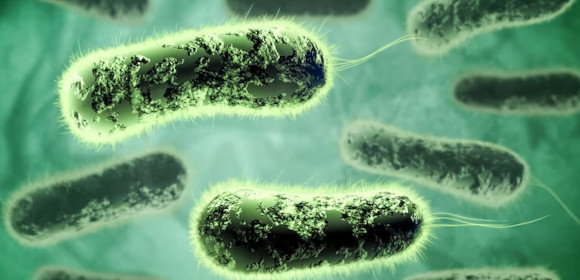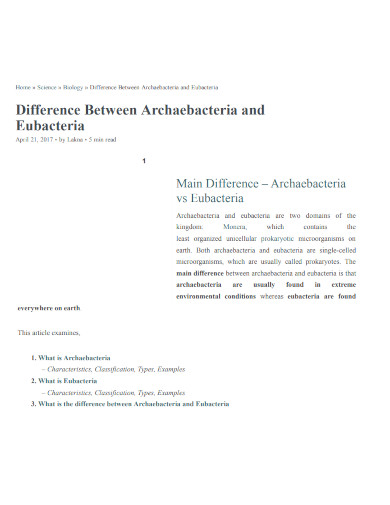Archaebacteria
The natural world is full of wonder and balance, as all organisms in a given area flourish together in perpetual cycles. Microorganisms are living animals that are very hard to observe due to their microscopic size. One of the most interesting types of microorganisms is called archaebacteria or archaea.
1. Difference Between Archaebacteria and Eubacteria
2. Archaebacteria Kingdom Classification Worksheet

pngisd.org
3. Archaebacteria Biology Root Words & Suffixes

k12.or.us
4. Archaebacteria Classification of Living Things

nust.na
What Are Archaebacteria?
Archaebacteria or archaea is a specific kingdom of microorganisms that have special characteristics and functions in the environment they are present in. Not only are these archaeas very important in the conservation of the ecosystem, but these microorganisms can survive extreme temperatures and extreme environments due to special genomes.
How to Differentiate Archaebacteria from Other Microorganisms
Scientists have determined that archaebacteria or archaea are a specific species or classification of living microorganisms that we can observe in the natural world. Archaea have unique characteristics and structures that differentiate them from other microorganisms like eubacteria, and viruses.
Step 1: Check the Cell Structure of The Microorganism
Archaea have very similar cell structures to that of bacteria. This means you will need to use a microscope to check the cell structure of the microorganisms to differentiate it from the rest of the other types of microorganisms.
Step 2: Determine the Presence of Flagella and a Cell Wall in the Cellular Structure
Both archaea and bacteria have flagella and cell walls in their cellular structure. This means that you will need to determine the presence of flagella and a cell wall to further differentiate the microorganism from the other types of microorganisms.
Step 3: Check the Genes of the Microorganism
Archaea and bacteria share the same cellular structure, but their similarities end there. archaea have special and unique genes which lend to the distinctive characteristics of the microorganism. This means you will need to determine if the microorganism has special genes and adaptations to survive in extreme environments.
Step 4: Determine the Presence of Ether Lipids in the Microorganim’s Body
Ether lipid is a special characteristic of archaea that further differentiate them from bacterias. This means you will need to determine if there are ether lipids present in the cellular structure of the microorganism.
FAQs
What are the types of archaebacteria?
There are three types of archaebacteria or archaea that scientists have categorized and differentiated through their special and unique characteristics. The chrenarchaeota have special proteins and substances that compose their body, which allows this type of archaea to survive environments of extremely high temperatures (110 degrees celsius or 230 Fahrenheit) and highly acidic environments. Korarchaeota is archaea that have unique genes and are harder to find in nature. Scientists believe that the korarchaeota have similarities to the common ancestor that has evolved into the two other types of archaea. Euryarchaeota is archaea that has the special ability to convert traces of complex carbons in the area around it into molecules of methane. This occurs due to the archaebacteria’s ability to perform cellular respiration, which is the bacteria’s method of conversion.
What is special about archaebacteria?
Scientists have tagged and denoted archaebacteria or archea as the oldest organisms on Earth. These species are an ancient form of primitive microscopic life in a given ecosystem, biome, food chain, and food web. Not only are archaebacteria ancient, but these species have significantly contributed to the Earth’s biosphere and biodiversity. For example a lot of the euryarcheaota process complex carbon emissions and substances, which have provided a major amount of methane in the atmosphere. Some archaea scavenge dead carcasses and process them back into chemical energy, which plants use to grow and thrive. Therefore archaebacteria are significant and special, due to their ability to outlive most organisms on Earth and provide fundamental substances and elements in the environment around them.
[/ns_col]
What do archaebacteria do to humans?
Archaebacteria or archaea present a lot of benefits to the human body as they have specific processes and genes that will benefit their host. For example, the person’s skin requires nitrogen to lower skin PH levels and infection rate or chance. Due to some of the archaea’s abilities to survive in extreme environments and their anaerobic tendencies, these microscopic organisms can survive in areas of low oxygen. All of this means that archaea can survive in the person’s intestines and conduct processes that will help break down specific materials into absorbable elements and substances. In conclusion, a lot of our internal body processes rely on the presence and processes of archaea in and on the human body.
Archaebacteria or archaea are a specific specie of microorganisms that have been present since the beginning of life on the planet. All of the microorganisms scientists have labeled as archaea have a long lifespan and can survive extreme environments for long periods. Therefore, it is important to understand how these microorganisms exist and their interactions with the different organisms in the environment they are in.




